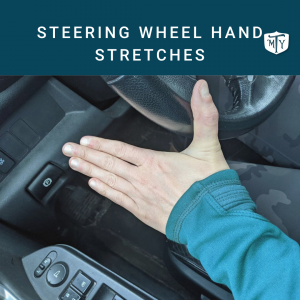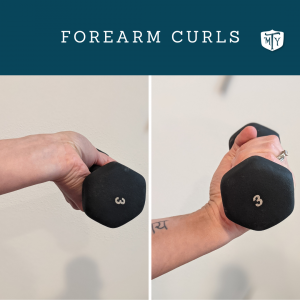A Truck Driver Must: Steering Wheel Hand Therapy
A Truck Driver Must: Steering Wheel Hand Therapy
Possible Causes for Grip Strength Issues:
- Weakness in the hands and forearms
- A pinched nerve (in the upper back, shoulder, or arm)
- Arthritis
- Nerve damage
- Carpal Tunnel
- Heart Problems
- Fascial restriction/scar tissue
Research shows that grip strength is a good predictor of overall strength, which serves as a good predictor for overall health, including cardiovascular disease risk. In a large-scale study published in the journal The Lancet, researchers measured the handgrip strength of nearly 140,000 people across 17 countries and then followed subjects for approximately four years. The study findings revealed that lack of grip strength is a stronger predictor for death from any cause, including cardiovascular disease, than systolic blood pressure (the pressure in your arteries when your heart contracts).”
For drivers, this can be a great way to gauge one’s health and, more importantly, decide to do something about it sooner than later.
The good news there are many things you can do to improve your grip strength and many things a driver, even living over the road, can do to improve your overall health, wellness, and fitness.
Exercises Truck Drivers Can Do To Improve Grip Strength:
-
Steering Wheel Hand Stretch

- Holding the steering wheel safely, use one hand and press the thumb down again the wheel
- Keep your wrist straight
- Extend your fingers long
- Place your thumb on the wheel & pull down
- Repeat this with each finger individually and then with all four fingers together
- Hold each one for 5 to 10 counts or unit the stretching subsides
- You do not need to overdo this; make sure what you do is breathable
- Repeat the opposite hand
- Repeat 1-3 times a day
2. Scapulae Push-Up

- Come to a Plank position on your truck step or the ground
- Turn the folds of the elbows forward and draw your shoulders back
- Tip your belt line up and into your abdomen for more core support
- Without bending your elbows, pinch your shoulder blades together behind you
- Then broaden them without hunching your back
- Continue to do this 5-15 times in a row.
- Do not sag the head or belly, and this moving is only 1-3 inches (not big)
3. Strength Building Pinch Grip

- Hold a weight, kettlebell, or heavy object between your pointer finger and thumb.
- Slowly and mindfully lift the object off the ground
- Work to hold it for up to 30 seconds
- Repeat this 1-3 times a day to continue to improve pinch grip strength
4. Forearm Curls

- Hold the weight in your hand.
- Bring your elbow to 90 degrees.
- Drop the hand to extend the wrist as far as you can
- Next, curl the weight up and bring your knuckles into your forearm as close as you can
- Repeat this 10-30 times
- Then hold the weight verticle and your hand sideways
- Repeat the same process, but this time moving right to left like a gate closing and opening
- Repeat this same process on the opposite side.
By taking the initiative to do something about things like this, you can lengthen your career, and more importantly find relief to do your job without nagging issues like this.
Attention Trucking Companies
Trucking companies must find this a necessity to help take care of their drivers. More than 80% of work-related injuries are repetitive injuries, which means it’s what the employee is doing day in and day out. Drivers need relief, and that relief can be something the trucking companies these men and women work for can give them.
Does your trucking company offer driver fitness and wellness programming and seminars for you and your fellow driver? If not or you would like to see them upgrade what they offer. Reach out to us here at Mother Trucker Yoga. Here at Mother Trucker Yoga, we leave the trucking to the trucking companies and drivers, and that way with nearly 20 years of experience working with people just like you, with real jobs, real ailments, and real pain, you can leave the health, fitness, and healing to us! CLICK HERE TO find more out about our corporate programming!







